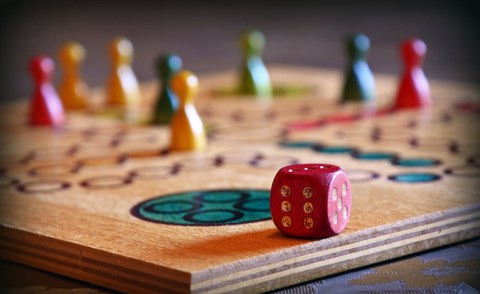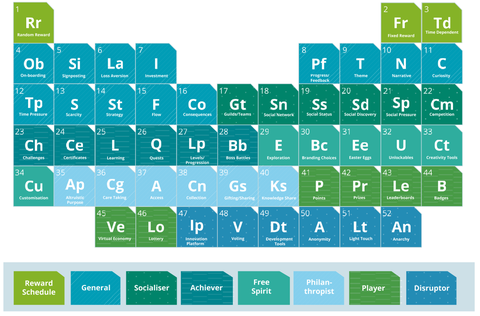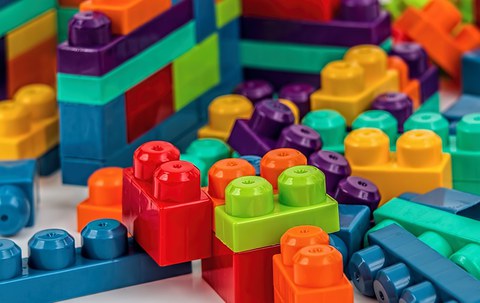Gamification in teaching
In general, we speak of gamification when game elements are used in non-game contexts (e.g. university teaching) to increase the motivation of users and/or influence their behavior.
What are the benefits of gamification for teaching and learning at universities?
By incorporating playful elements into teaching and learning scenarios, participants' motivation to learn can be increased and the learning process promoted.
What game elements are there?
There are a variety of game elements that can be used in different contexts. Marczewski's gamification periodic table provides a comprehensive overview of these elements.
Examples
- Narrative: embedding something in a story
- Time pressure: giving a task a countdown
- Rewards, badges, points, prizes
- competition
- Exploration, discovering an environment and details
- Challenges, missions, quizzes
- Leaderboard, progress bar
Different game elements motivate in different ways and appeal to different people. The selection of game elements therefore supports the target group-oriented design of gamified applications.
How do I proceed?
Game elements can be integrated into almost any teaching-learning arrangement. Before the development of gamification can begin, the framework conditions and resources must first be determined and fulfilled so that the desired goal can be successfully achieved:
- Identify the challenge.
- Define your expectations and desired goals.
- Determine your main topic.
- Identify your time resources (time to prepare the teaching materials, duration of implementation, etc.).
- Identify which of the teacher's existing skills are required for creation.
- Analyze your target group (number, personas, usage types, etc.)
- Establish the link to the curriculum.
A concept must then be developed:
- Define game idea (topic, story, etc.)
- Identify the event format (face-to-face, virtual, hybrid; synchronous or asynchronous)
- Highlight central game elements
- Establish a connection between the course and the game
- Plan the use of technologies (tools, media)
- Check the use of technical resources (internet access, projector, PC, smartphone, etc.)
- Define required material
What examples are there?
Playful elements in university teaching are often used to activate knowledge, to test knowledge, to secure acquired knowledge and skills or for discussions and coordination in the teaching-learning arrangement, e.g. through
- quizzes
- single-choice or multiple-choice tests
- surveys
- riddles
- Open questions, etc.
Which digital tools can I use?
The following free tools can be used to support teaching and learning processes in a fun way (e.g. through knowledge tests).
- for creating interactive quizzes
- Video: https://www.youtube.com/watch?v=7XzfWHdDS9Q
- https://kahoot.com/
- Knowledge check through various generated flashcards, games and tests
- Video: https://www.youtube.com/watch?v=7oJk0IBynoU
- https://quizlet.com/
- Creation of multimedia interactive learning elements
- Video: https://www.youtube.com/watch?v=hNgFXHv6eIs
- https://learningapps.org/
- offers 43 different interactive applications (also: interactive videos, presentations ...)
- Tutorial: https://h5p.org/documentation/for-authors/tutorials
- https://h5p.org/
Further information and advice is also available from the Digital Tools and Digital Teaching teams at ZiLL.
The learning and teaching adventure Gami|cation also helps you with the gamified design of learning and teaching arrangements (LLA).


